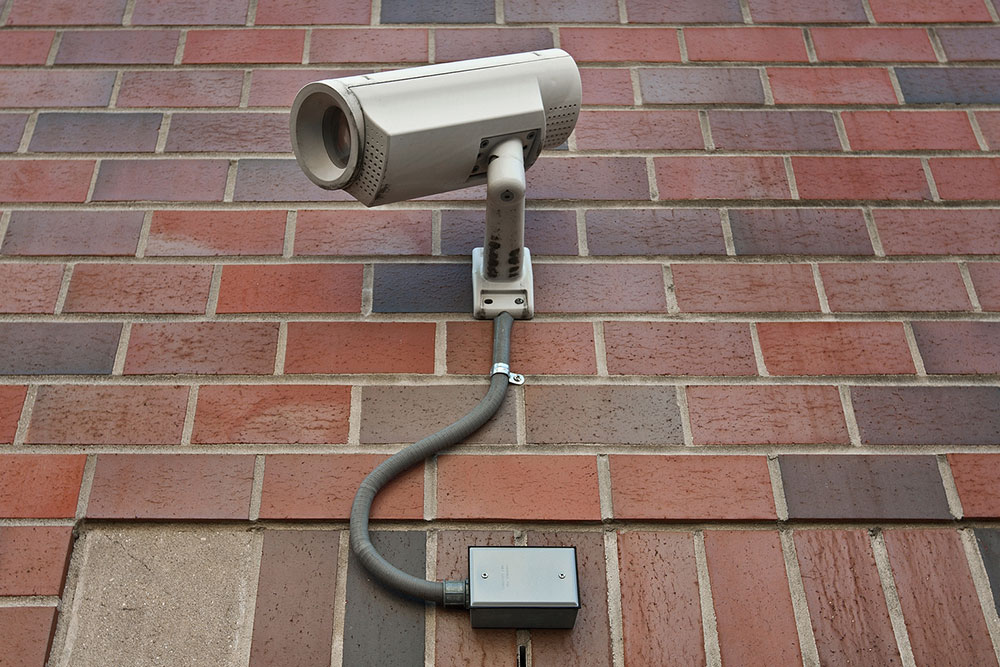13 mistakes to avoid while installing a home security camera

Today, the emergence of cutting-edge technology has ensured heightened security, even when there are no security personnel or inhabitants in the home. Security cameras, when installed correctly, are an essential aspect of home security. However, incorrectly installed cameras can render the security system futile since they won’t be able to capture useful footage. So, one should avoid some mistakes installing home security cameras.
1. Not installing them at the right spots
Many people install security cameras at hidden spots so that they are not noticeable. However, not installing them at the right places can hamper the camera’s line of sight, preventing it from capturing the ongoing events efficiently. It is a good idea to install security cameras focused on areas like first-floor windows, side doors, back doors, and other entrances around the home, so that any burglary attempts made through these entrances are captured clearly.
2. Placing the cameras too high or too low
Height is an integral aspect to consider while installing security cameras. Placing security cameras too close to the ground may prevent faces from being captured and impede the investigation process. Similarly, installing them at a significant height can also prevent one from obtaining clear videos of faces; moreover, it makes the equipment susceptible to wear and tear due to harsh weather conditions. Hence, it is important to place security cameras at a suitable height that is neither too high nor too low.
3. Placing cameras facing one another
In many cases, two or more security cameras may be needed to facilitate a 360-degree surveillance of one’s surroundings. However, a common mistake is to place security cameras facing each other. In such cases, the infrared light of one camera may be captured by the other, leading to distorted footage. For this reason, one should plan the placement of multiple security cameras systematically, ensuring that they cover all the relevant areas while not being captured in each other’s line of sight.
4. Overlooking the importance of lighting
Like any other camera, security cameras require adequate lighting to be able to provide clear footage. Too bright or inadequate lighting can result in unclear captures, particularly at night or in places with insufficient sunlight penetration, such as parking areas. It is advisable to install sufficient lights around the area and test the footage after installing security cameras to ensure that the lighting is optimal.
5. Placing the cameras too far away
Accurate capturing of facial features is essential for proper investigation and identification of the culprits in case of burglaries and other crimes. Moreover, details like a vehicle’s identification number can single-handedly help track down burglars and criminal offenders. Although one may zoom in to try and identify such aspects, zooming typically distorts the quality of the footage. Hence, one should place security cameras closer to the area of surveillance to ensure clarity.
6. Relying on image enhancement applications
Many individuals believe that the clarity of CCTV images and clips may be enhanced using image enhancement applications. However, in reality, these applications cannot enhance the quality of an already pixelated image. Consequently, the original image or video quality should be satisfactory.
7. Not having a backup power source
Security cameras can operate only with consistent electricity supply. Unfortunately, the prevalence of crimes can actually increase when there is no lighting in the area. So, when one is installing a camera, one needs to ensure one has a backup power source, so that the camera continues capturing the surrounding events even in case of power outages.
Buying a good-quality security camera involves carrying out adequate market research, setting a budget range, understanding the essential features of these cameras, and installing them at the right places to leverage their benefits to the best extent possible. So, here are some common mistakes to avoid before buying a home security camera.
8. Not researching the available options
Today, there is no dearth of options and brands offering security cameras with the latest, most cutting-edge technology features. However, it is important to check out the features of cameras offered by different brands, read online reviews and ratings, and consult one’s family members, friends, colleagues, etc., regarding the quality of a brand’s products.
9. Buying a camera with outdated software or fewer features
A security camera system with outdated software can hamper the quality of the footage and deprive one of several advanced features that most modern security cameras are equipped with. Some of the desirable, cutting-edge features of modern security cameras include HD video capture, two-way audio, cloud storage, wireless communication, remote monitoring, and night vision. Security cameras with up-to-date software typically have such desirable features and can help with quick, efficient investigations when required.
10. Not testing the security camera
Just like a test drive is important before buying a car, testing security cameras is essential before purchase. Buying a security camera without testing it adequately may result in poor surveillance and unplanned expenditures later.
11. Buying a security camera without adequate warranty coverage
Security cameras with proper warranty plans ensure that one does not have to incur additional expenses in case of any defects in the product. Therefore, one should only buy security cameras with warranty periods of at least one year.
12. Not considering energy-efficient security cameras
Energy efficiency is an essential aspect to consider in the face of depleting natural resources. Although security cameras with higher resolutions typically consume more energy, many brands have begun offering security cameras with good resolutions and increased energy efficiency. It is important to explore such options, calculating the watts of power consumed by security cameras of different brands and shortlisting one that best balances energy-saving features with quality.
13. Overlooking the importance of sound quality
Sometimes, it becomes important to comprehend what the prime suspects of a crime are discussing, in addition to identifying them. Hence, one should not overlook the importance of sound quality in security cameras. Ideally, security cameras should have audio features, such as two-way audio and local recording.


